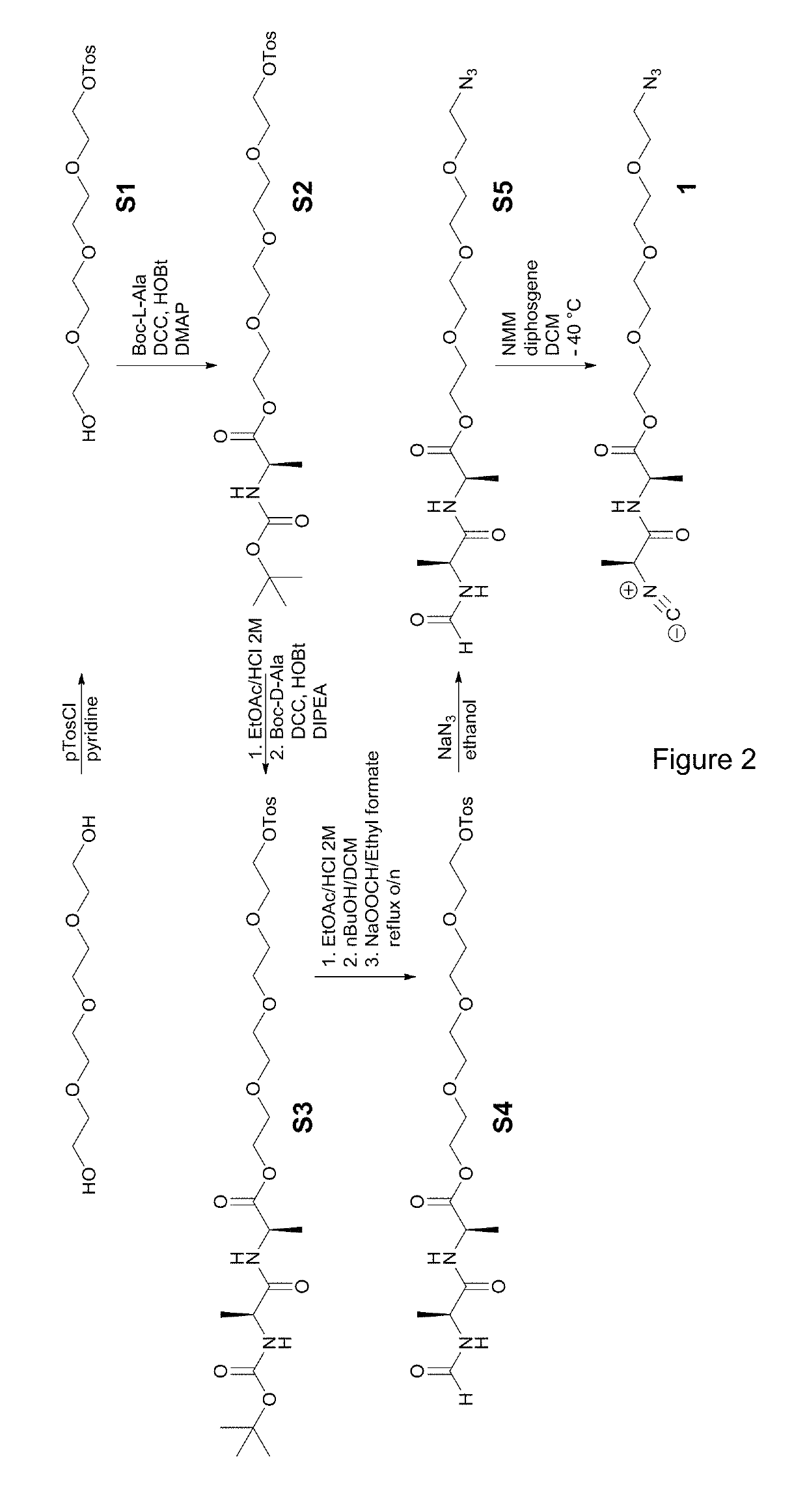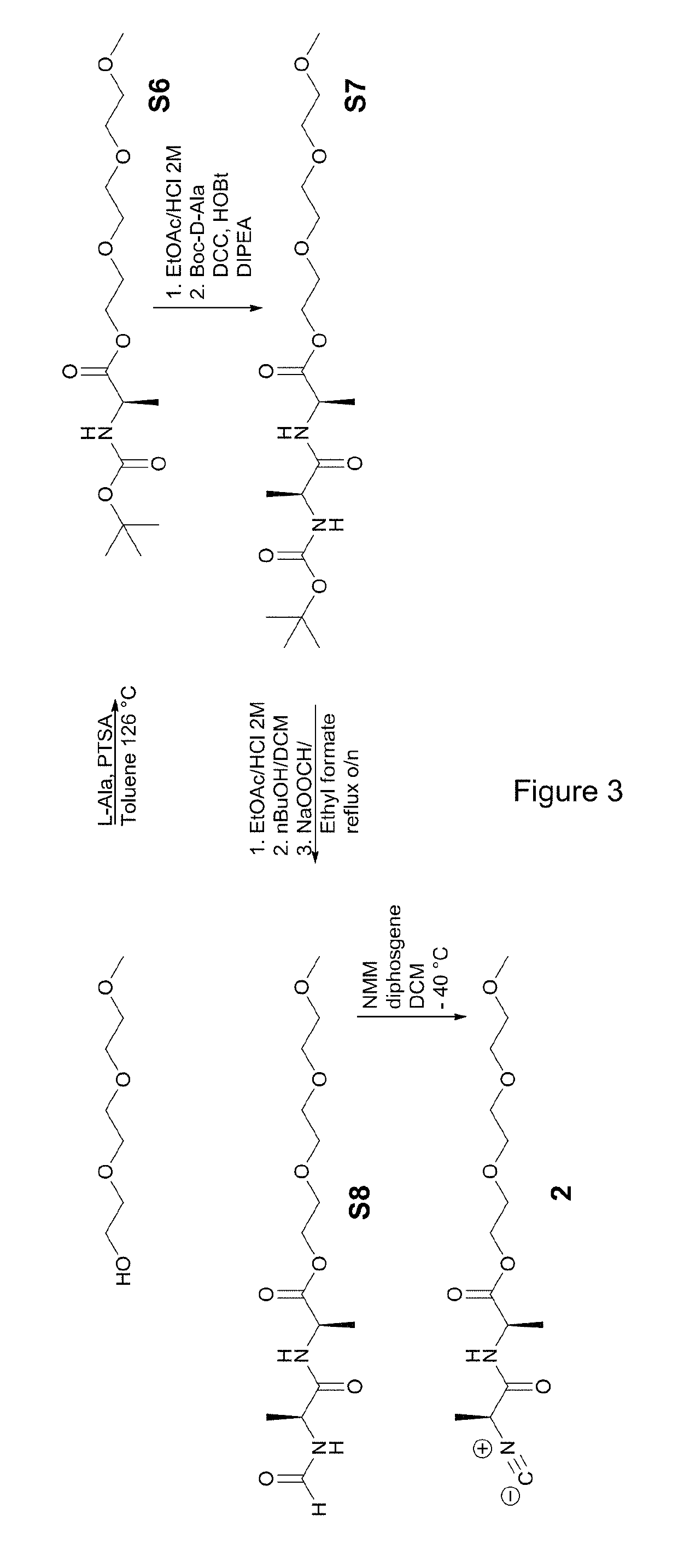Polymer suitable for use in cell culture
a cell culture and polymer technology, applied in the field of preparing a polymer, can solve the problems of inability to form complex 3d networks in isolation, inability to bind to the cell surface, etc., to achieve efficient reactive side groups in the chain, and interest
- Summary
- Abstract
- Description
- Claims
- Application Information
AI Technical Summary
Benefits of technology
Problems solved by technology
Method used
Image
Examples
example 1
[0155](1) Preparation of the Copolymer
[0156](1.1) Preparation of the First Comonomer
[0157]The first comonomer grafted with a linking group was synthesized according to the scheme of FIG. 2.
1.1.1. Synthesis of 2-(2-(2-(2-hydroxyethoxy)ethoxy)ethoxy)ethyl 4-methylbenzene sulfonate (S1)
[0158]Tetraethylene glycol (28.5 mL, 164.3 mmol) was dissolved in 50 mL pyridine. The solution was subsequently cooled to 0° C. while stirring. Argon was bubbled through the solution for 15 minutes. Tosylchloride (21.93 g, 115 mmol) was added portion wise to the stirring solution. The mixture was further stirred at room temperature for 12 hours. The reaction mixture was diluted with 50 mL of 10% citric acid. The mixture was extracted three times into 250 mL of chloroform. The combined organic layers were dried over anhydrous Na2SO4, filtered and evaporated under vacuum. The resulting yellow oil was purified using column chromatography (SiO2, 0.060-0.200 mm; ethyl acetate as eluent) to yield S1 as a pale ...
experiment 7
[0208]The elastic modulus of the hydrogel obtained in step 5 of Example 1 was measured as follows:
[0209]Instrumental. Rheological measurements were performed using a TA Instruments Ares G2 rheometer in a ≈20 mL Couette configuration with temperature control using a peltier element. Samples were prepared by mixing the appropriate amount of polymer in demi water (20 mL) and regular vortexing the mixture over time (at least 24 hours) until a homogeneous solution was obtained. Solutions of PIC were prepared in refrigerated (4° C.) conditions to avoid early gel formation. The measurements in the linear response regime were conducted at 4% strain at different frequencies between 0.5 and 5 Hz. The data depicted in the manuscript was recorded at 1 Hz. Temperature scans were recorded at a heating rate of 2° C. min−1. The measurements in biologically relevant medias was performed on a TA Instruments Discovery HR-1 40 mm Aluminium parallel plate, set to a gap of 750 um and 1 mL of sample. The ...
PUM
| Property | Measurement | Unit |
|---|---|---|
| elastic modulus | aaaaa | aaaaa |
| elastic modulus | aaaaa | aaaaa |
| distance | aaaaa | aaaaa |
Abstract
Description
Claims
Application Information
 Login to View More
Login to View More - R&D
- Intellectual Property
- Life Sciences
- Materials
- Tech Scout
- Unparalleled Data Quality
- Higher Quality Content
- 60% Fewer Hallucinations
Browse by: Latest US Patents, China's latest patents, Technical Efficacy Thesaurus, Application Domain, Technology Topic, Popular Technical Reports.
© 2025 PatSnap. All rights reserved.Legal|Privacy policy|Modern Slavery Act Transparency Statement|Sitemap|About US| Contact US: help@patsnap.com



